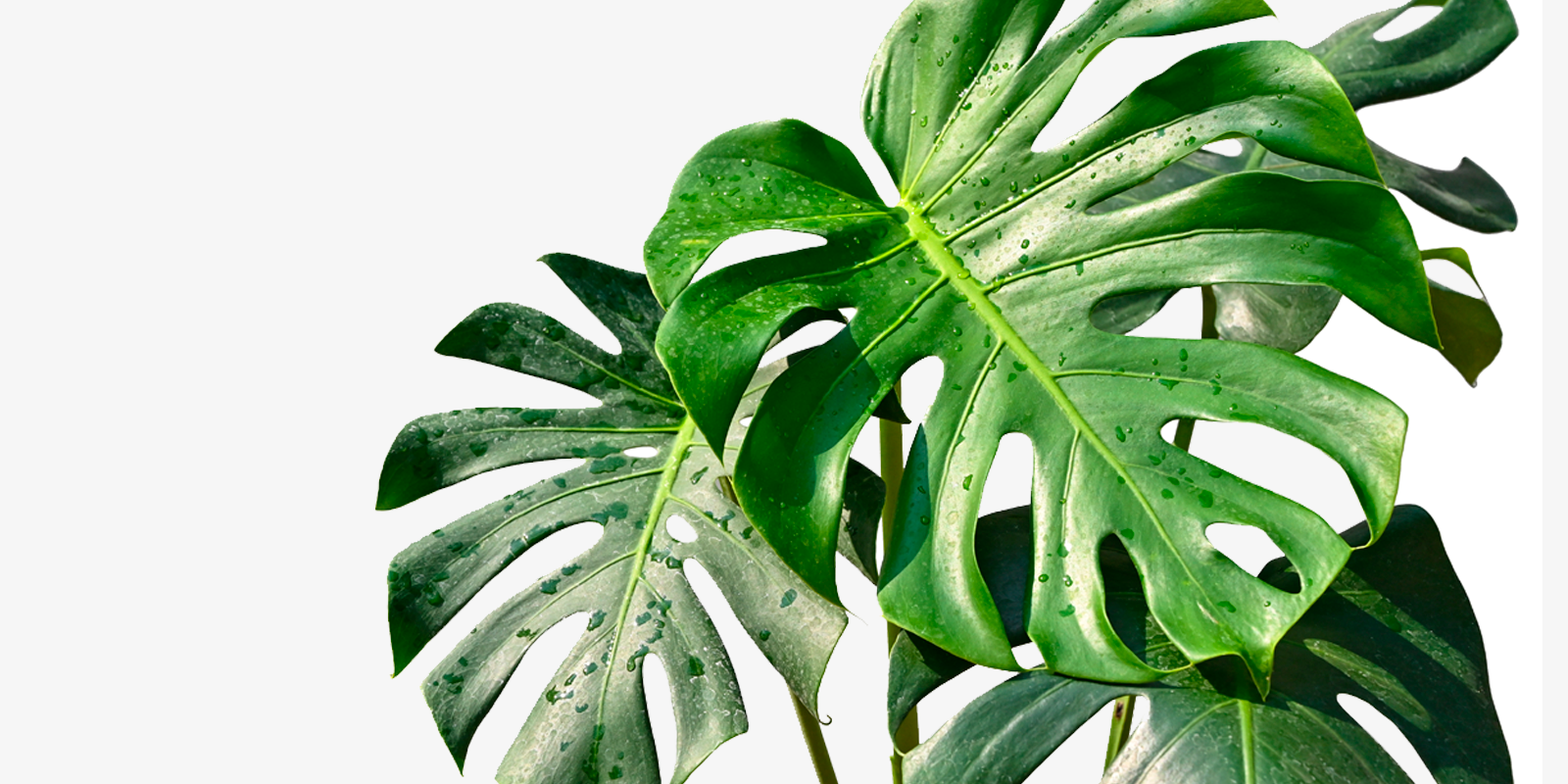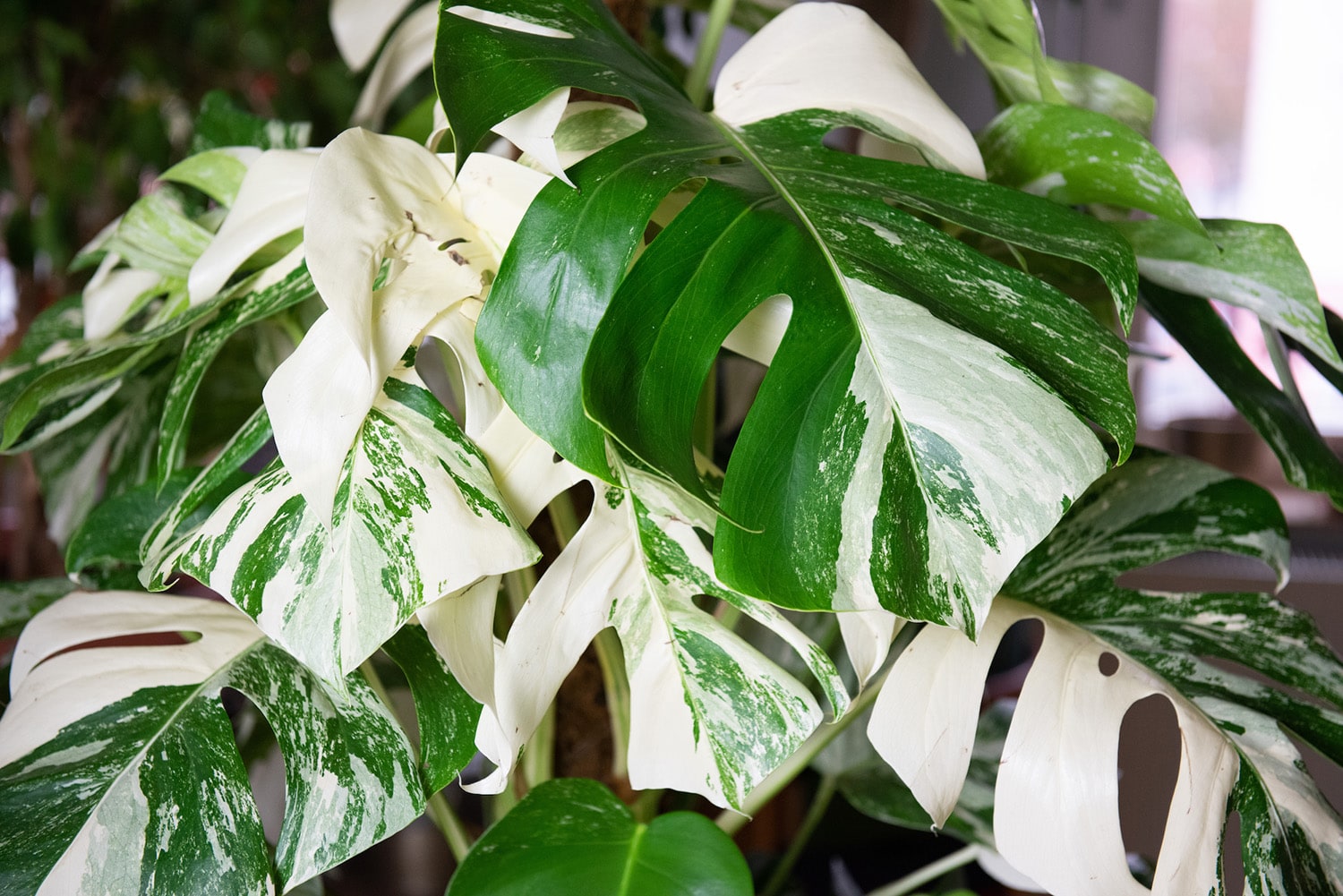Monstera Care

Monstera Care : A Comprehensive Guide
Monstera plants are a familiar sight in tropical scenes anywhere. You may know them as Fruit Salad plants, Elephant Ear Plants, or the Swiss Cheese Plants. You may have seen them featured on everything from cell phone covers to home decor items like linen.
They are also one of the world’s most sought-after house plants, with one specimen selling for $5,000 on TradeMe.
Monstera plants are native to the tropical rainforests of Panama, southern Mexico. In the wild, these attractive climbing plants can grow several meters tall. They are a type of vine, so they cling to other plants with long aerial roots. They prefer nutrient-dense soil.
Don’t let these unusual characteristics put you off though. These attractive plants grow easily in Australia, once you’ve mastered the basics. Here’s your Monstera care guide.
Light Requirement
For any plant to thrive, it needs conditions as near as possible to those found in its natural environment. So, when you consider that your Monstera would ordinarily grow in the hot, humid forests of its homeland, it’s easy to see how your Australian abode may need some adjustments.
Light is the first consideration in plant care since this is what they use to create nutrients for themselves by means of photosynthesis. In the forests of central America, plants receive light filtered down through the foliage of other plants.
This means you should shelter your Monstera from the glaring rays of the Australian sun without cutting it off from sunlight altogether. Too much sun is always worse than too little. These plants will survive in low light, but less light means smaller leaves.
Abundant light means lush, large leaves, and a happy plant but if it’s exposed to the hot noontime rays for too long, you’ll run into problems.

So, the happy medium is enough indirect light that’s bright enough for you to read a book near them, without any artificial light. For best results, place it close to a window with other trees outside, or put up a net curtain to shelter it from the sun’s hottest rays.

Ideal Temperature and Humidity
In Central America, average day time temperatures are around 21° C, so Monstera plants feel right at home in ordinary indoor temperatures of between 20–30 °C. During the wintertime, the plant benefits from a rest period induced by lower temperatures of around 12 to 18° C.
Apart from warm temperatures, the Central American forests are also known for their humidity. You can imitate this tropical environment by misting your plant with water once a week or by using a humidifier.
Watering Requirement
Over-watering is a common issue with most indoor plants. You only need to water your Monstera once the top two inches of the soil have dried out. Usually, this should be around every two to four weeks although external factors like season, airflow, and positioning of the plant will determine how often to water your plant.
During winter, you should reduce the amount of water you give your plant. You’ll know when it needs water as the leaves will start wilting.
If you place a large tray under your plant or use a self-watering pot, don’t leave these vessels full of water for more than 24 hours. That’s enough time for the soil to soak up adequate water for your Monstera. Tip out any excess so that you don’t inadvertently create an environment for fungus and bacteria to grow.

It’s a great idea to water your plant outside in a sheltered area or in the shower and then leave it to soak up the moisture. Watering from above will help remove any dust from the leaves.

Alternatively, you can get a mixture that’s specially formulated for Monstera plants.
Fertiliser Requirement and Plant Food
In ideal circumstances, Monstera plants grow quickly. It benefits from regular applications of liquid fertiliser to feed it during these growth spurts.
In the spring and summer, add some fertiliser every second time you water the plant. Dilute the fertiliser to half strength and apply half as often during the colder months if your plant is still growing vigorously.
Which Fertiliser Is Best for Your Monstera?
Seaweed-derived products aren’t the best for stocking up on key nutrients, but they do improve soil conditions and can reduce pot-shock and hydrophobia.
A general-purpose water-soluble fertiliser is best for your Monstera plant. You can use a 20-20-20 solution using half a teaspoon per 100 ml of water.
Caring for Variegated Monstera
There are several varieties of Monstera available. These include attractive types with variegated leaves.
If you’re lucky enough to get your hands on one, you’ll need to take extra special care of it.
The main difference between this plant and it’s solid green relatives are that the variegated parts of its leaves can’t absorb sunlight. This means it needs more sunlight than the ordinary Monstera. Bright ambient conditions are best for these plants as the variegated parts of the leaves are sensitive to burning. Soil should be slightly moist, but not oversaturated, to avoid root rot.
Apart from this major difference, it will benefit from the same watering and fertilising routine as your usual Monstera.


